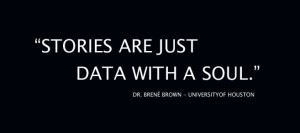Why and how to tell a story effectively
One consequence of having written a book, and having acquired a reputation as an editor, and being willing, is that I’m often asked to critique early drafts of other writers’ creative efforts.
For a great many years I’ve been handling technical literature (usually quite different from fiction, although some principles apply in either case). But the long process of finalizing WATB involved participation in several workshops and critique groups, which seemed to awaken a greater sensitivity for what works or fails to work in writing. Also, to keep that perception sharp I formed the habit of exercising it via reviews of every book I read.
Sadly, I no longer write much at all. Events have distracted me from that kind of thinking. But I still delight in great writing when I see it, and look for the features that make it great. And I enjoy contemplating ways in which writing that’s merely good might become great.
It’s a matter of communication. People respond to stories. If you need to convey an important message to others, consider making a story out of it.
Coaches for job applicants insist that information presented in story format is more likely to make an impression on the hiring manager. In fact, managers now expect memorable situation → action → response anecdotes for every trait a candidate claims to offer.
Likewise, good business proposals promise an unfolding sequence of events in which the recipient’s need is transformed into success, with minimal fuss and at an acceptable cost.
The same process goes on in courtrooms, as well. Having served on several juries, I’ve observed the way trial lawyers sought to influence my peers and me through compelling stories.
But stories don’t always achieve the desired result. In every legal contest, one side loses. During my days as a proposal development specialist, I helped assemble some excellent bids that met with rejection. There’ve been many job interviews in which I failed to convince decision makers that I was their ideal choice. And publishers are forever receiving, and rejecting, manuscripts. Way too often, readers of published books also put them aside, regretting the time spent.
So the simple act of verbalizing a message is not enough. Before it is shared, any important communication deserves, as a bare minimum, reflection and self-editing.
It’s easy to find checklists that condense that process. Bullet points may oversimplify things, but like the guidelines they seek to convey, they’re a helpful device. High planes of achievement may call for a bit more than these examples, but here’s a start:
- Shoot for a beginning that will convert a casual reader or listener into someone who willingly puts everything else aside.
- Unless you are writing for or talking to yourself, be mindful of the takeaway your audience needs to have.
- Don’t let that audience become distracted by needless ambiguities or doubts concerning your ability to get to that takeaway.
- Except in cases where details would be a distraction, be specific. Use real people, real events, real dialog.
- Strive for short paragraphs, short sentences, simple words, active voice.
- Use analogies and metaphors. Such devices help people visualize and connect with your subject.
- Consider withholding a key or startling piece of info until the end (as Paul Harvey used to do in radio bits that “turned news into narrative”).
We all have stories to tell. When we tell them effectively, everyone benefits.
An edited version of this blog post also appears in The San Diego Reader.
